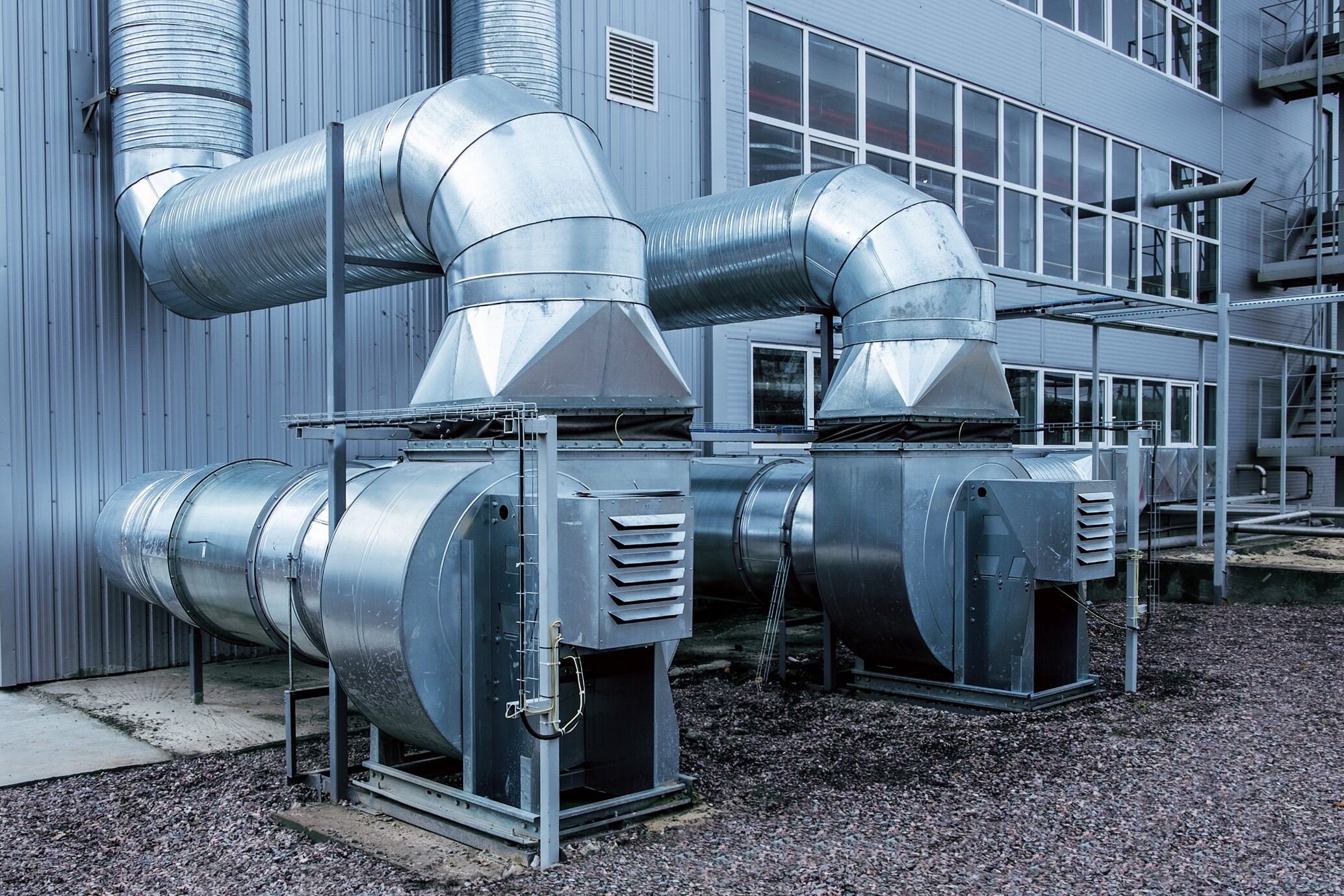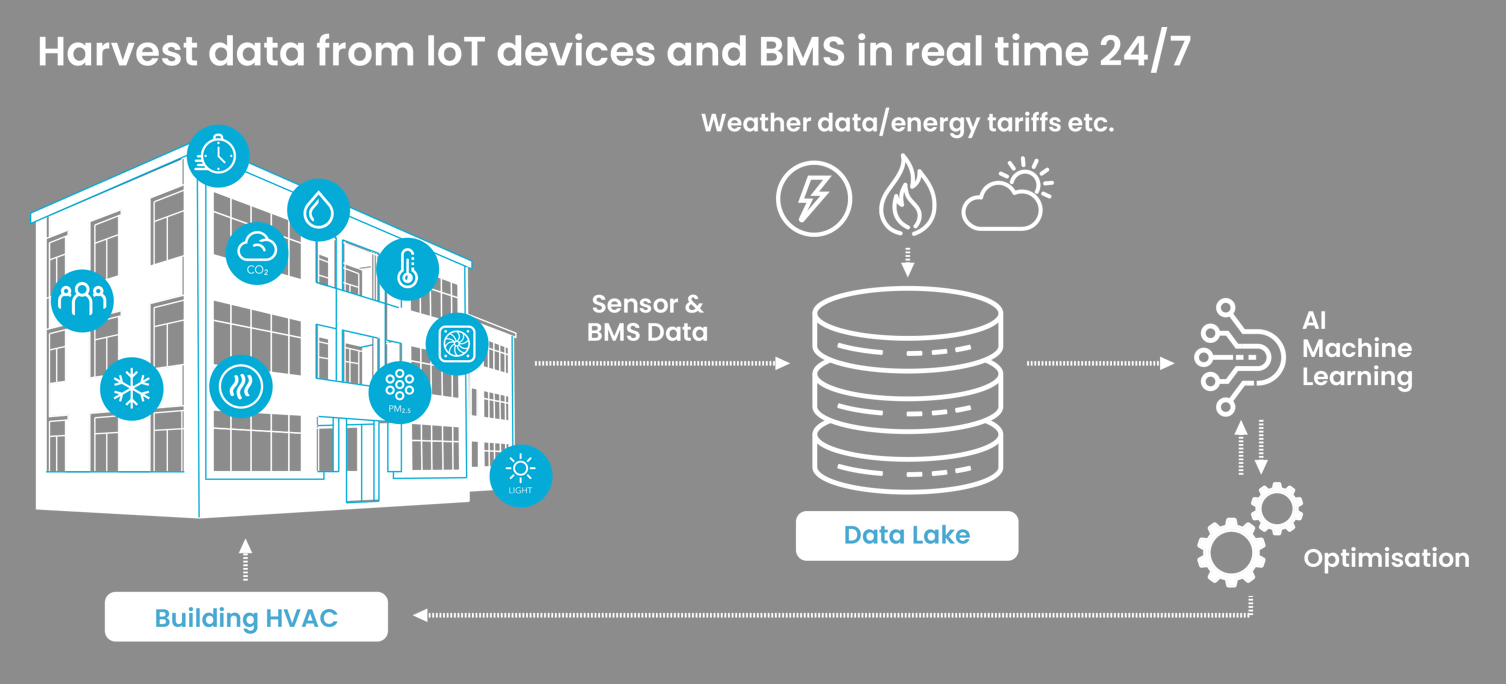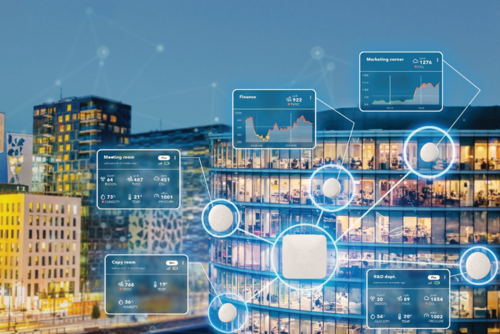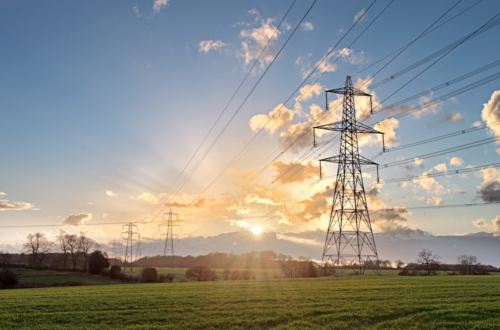How AI technology is helping reduce energy consumption and carbon emissions in commercial real estate

Commercial HVAC systems optimised using AI algorithms yield tangible benefits for all parties and is fast becoming a preferred solution to make buildings more energy efficient and reduce their operating costs.
Heating, ventilation and air conditioning (HVAC) systems are usually the largest energy-consuming loads in commercial real estate. For this reason, energy efficiency measures that target HVAC can achieve major savings and using today’s technological advances, it has become easier than ever before.
Why does building optimisation matter?
Research shows that buildings in the EU account for around 40 percent of total energy use and are responsible for some 36 percent of greenhouse gas emissions. A typical HVAC system uses around 39 percent of a building’s total energy consumption, and it is estimated that around 75 percent of buildings in the EU are energy inefficient, meaning a large part of the energy used goes to waste.
The built environment must therefore progress decarbonisation urgently for a number of reasons, the first being that the Minimum Energy Efficiency Standards (MEES) are now in force, and it is a legal requirement for buildings to be increasingly energy efficient over the next few years. The second, soaring energy prices, have brought building optimisation quickly up the agenda for building owners and managers. In addition, the demand for green buildings is rising rapidly as found in the recent RICS Sustainability Report. The report found that occupier and investor demand for green buildings is continuing to rise in the UK, with nearly half of respondents reporting lower rents and sale prices for non-sustainable buildings.
In the current market, building owners and managers do not have the option to increase rents and so must reduce operating costs and add extra value to their properties. A way to do both is to adopt a holistic, systemwide approach and establish smart HVAC systems in their buildings to better manage energy usage whilst maintaining absolute balance between occupant comfort and energy consumption.
So, what does it take to equip a building with a smart HVAC system?
Well not that much really, especially if there’s already a traditional HVAC control system in place like a building management system (BMS). The BMS receives control data such as building temperature, humidity and CO2 levels, and outdoor weather conditions from multiple sensors. So, when it gets dark outside, or indoor spaces become overcrowded, or when outdoor temperatures change, the BMS system responds automatically to adapt the indoor environment using predefined setpoints.

Traditional BMS and HVAC systems allow users to manually adjust temperature, ventilation rates, and other parameters to achieve the desired indoor environmental comfort. However, this is often driven by occupant complaints leading to differing micro-climates within floor spaces, with demands for both heating and cooling plant to run at the same time.
As the ventilation, heating and cooling needs of a building are constantly changing, the control system is vital in ensuring the efficient running of HVAC plant to deliver the required occupant comfort. myBEMS is able to adapt to these changing circumstances, processing real-time data from IoT sensors and adjusting the HVAC system automatically. The system is able to analyse occupant behaviour and continually learns, modifies and improves its algorithms to provide deeper insight into how the building performs. This delivers greater energy efficiency, cost reductions and occupant wellbeing over the long term.
A good example to highlight this is that many buildings have ventilation systems that operate at full airflow all the time which wastes a significant amount of energy, as cooling or heating higher volumes of outdoor air uses much more energy. When ventilation controls have AI, they can determine the optimal airflow required by the building. The system can also track the number of occupants in the building, and the concentration of key air pollutants like VOCs and particulate matter (PM).
And the benefits are vast for both building occupants and building managers alike, with the system reacting quickly to the needs of occupants whilst significantly reducing energy bills and cutting carbon emissions as it does so. Typical annual energy savings of 20 – 40 percent can be achieved with a ROI less than 12 months.
For more information about myBEMS, Evotech’s smart AI technology for commercial HVAC systems, please visit www.evotech.co.uk/mybems email info@evotech.co.uk or call our team on 0333 207 4245.
Return to topLatest Articles
How the Internet of Things (IoT) is revolutionising building energy efficiency
Read More >Choosing the right green building certification
Read More >What will be the response to spiralling energy prices and will it benefit or harm air quality
Read More >Spiralling energy prices put businesses at risk
Read More >



